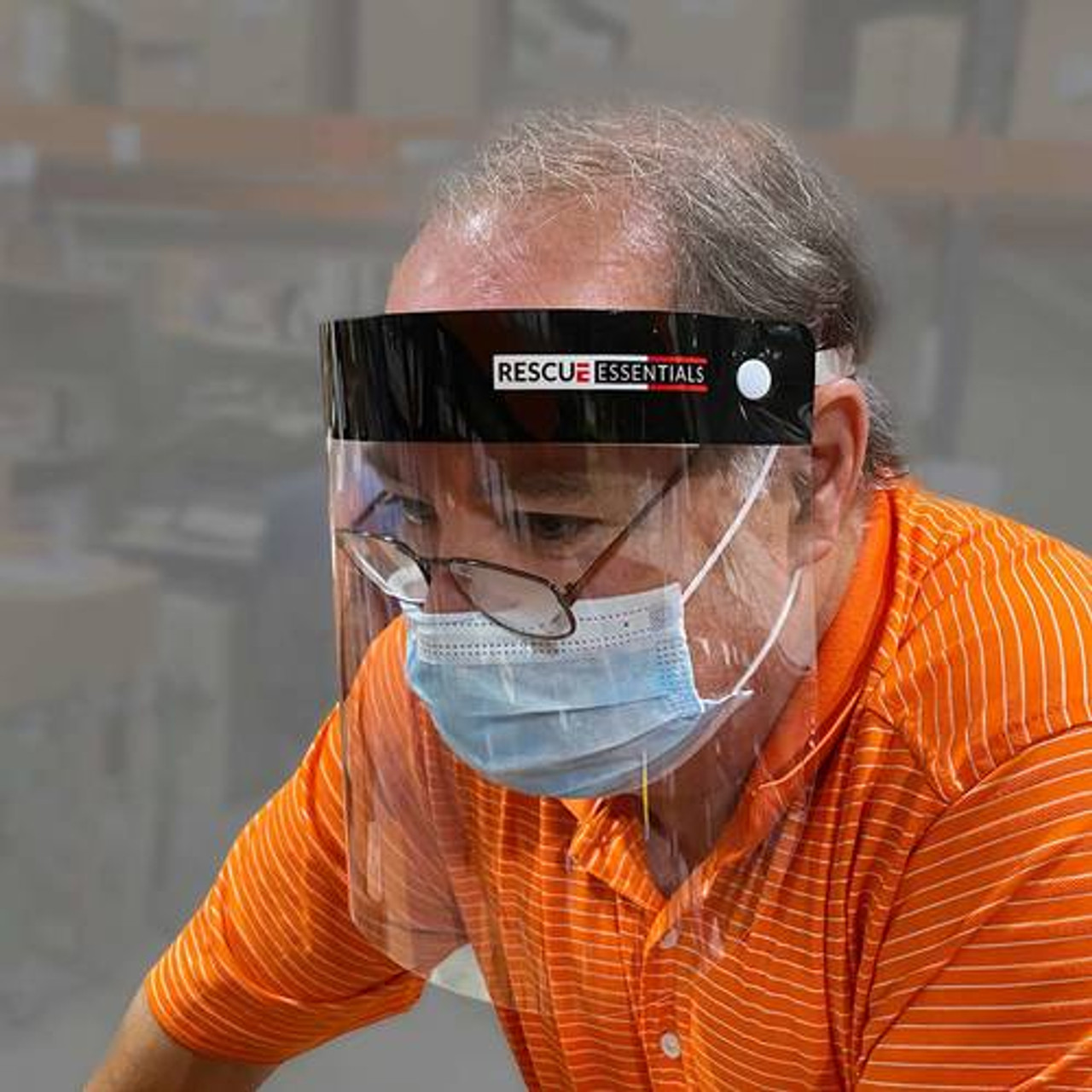As a firefighter or EMS worker providing medical treatment and transport of ill patients, how can I protect myself and others?
- Do not work if you are sick. If you develop a fever or symptoms such as cough or shortness of breath, call your healthcare provider for medical advice and guidance before visiting their office. Follow your department’s return-to-work policy after recovering from the illness.
- Contact your supervisor and occupational health program immediately if you are exposed to a patient with suspected or confirmed COVID-19 when you are not wearing recommended personal protective equipment (PPE). Complete any occupational exposure report forms required by your organization.
- If you are permitted to continue working, take additional precautions, including wearing a facemask and monitoring for symptoms and fever for 14 days after you were exposed to the patient.
Wear the following PPE for all patient interactions where COVID-19 is suspected or confirmed:
- Fit tested NIOSH-approved N95 or higher level respirator, or a facemask if a respirator is not available
- N95 respirators or respirators that offer a higher level of protection should be used instead of a facemask when you are performing or present for an aerosol-generating procedure.
- If you use a respirator, you must be clean-shaven because facial hair can cause respirators to leak around the face seal.
- A single pair of disposable examination gloves
- Eye protection, such as face shield or goggles, unless you are wearing a full-face respirator
- Gown or coveralls
If your PPE becomes grossly contaminated or compromised (e.g., torn), discard and replace your PPE in accordance with the policies and procedures of your organization.
- Follow CDC guidance if you are reusing, reprocessing, and storing PPE.
- Have patients wear facemasks or cloth face coverings for source control, if they can tolerate it.
- Limit the number of providers in the patient compartment to minimize possible exposures.
- Use EPA-registered hospital-grade disinfectantsexternal icon to disinfect non-porous surfaces of ambulances, gurneys, clipboards, radios, and other frequently touched surfaces or equipment according to the manufacturer’s recommendations. Non-porous surfaces of PPE such as powered air-purifying respirators (PAPRs) should be cleaned and disinfected in accordance with the manufacturer’s recommendation.
- Launder reusable personal protective clothing (e.g., uniforms) or other porous materials according to the manufacturer’s recommendations if they become contaminated.
- Use alcohol-based hand sanitizers with greater than 60% ethanol or 70% isopropanol, or wash hands with soap and water for at least 20 seconds when soap and water are available. Avoid touching your eyes, nose, and mouth.
What steps should employers of firefighter and EMS personnel take?
- Develop and share a COVID-19 health and safety plan to protect firefighter and EMS employees.
- Deliver up-to-date safety messaging on the current status of resources and protocols.
- Use National Incident Management System (NIMS) forms to document protective actions.
- Actively encourage sick employees to stay home. Employees should not return to work until the criteria to discontinue home isolation are met, in consultation with healthcare providers and state and local health departments. Sick leave policies should be flexible and non-punitive.
- Fit test personnel for appropriate respirators. Train them on proper donning, doffing, and maintenance of all PPE icon. All PPE should be accessible to responders when needed and available.
- Implement a specific protocolpdf iconexternal icon with dispatch centers to determine if a caller or patient may have signs or symptoms and risk factors for COVID-19, and communicate that information to responders.
Consult with state and local jurisdictions regarding access to PPE stockpiles if PPE supplies are limited. Consider establishing strike teams for suspected COVID-19 cases and sending in the fewest number of responders in full PPE as safety allows to assess the situation. Follow CDC and NIOSH guidance for strategies for optimizing the supply of PPE including:
- Using reusable respirators that offer an equivalent or higher level of protection as N95 respirators (e.g., elastomeric respirators, PAPRs, or self-contained breathing apparatus [SCBA] facepieces)
- Allowing extended use or limited reuse of certain types of PPE (e.g., N95 respirators)
- Considering the use of PPE past their manufacturer-designated shelf life
- During pre-hospital care, take steps for universal source control for anyone (e.g., EMS providers, patients, family members), regardless of whether they have symptoms:
- Cloth face coverings are not considered PPE but can be used for source control.
- PPE (e.g., medical facemasks, N95 respirators) should be reserved for firefighters, EMS providers, and other first responders.
Consult with your state and local jurisdictions regarding their policies and procedures for critical infrastructure workers,external icon like emergency first responders.
Content published from CDC guidelines: https://www.cdc.gov/coronavirus/2019-ncov/community/organizations/firefighter-EMS.html
